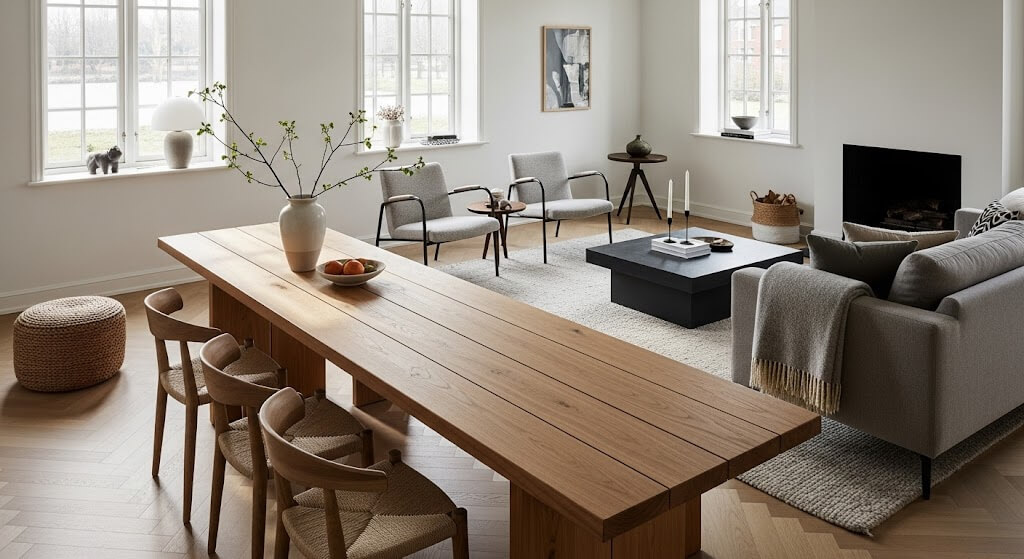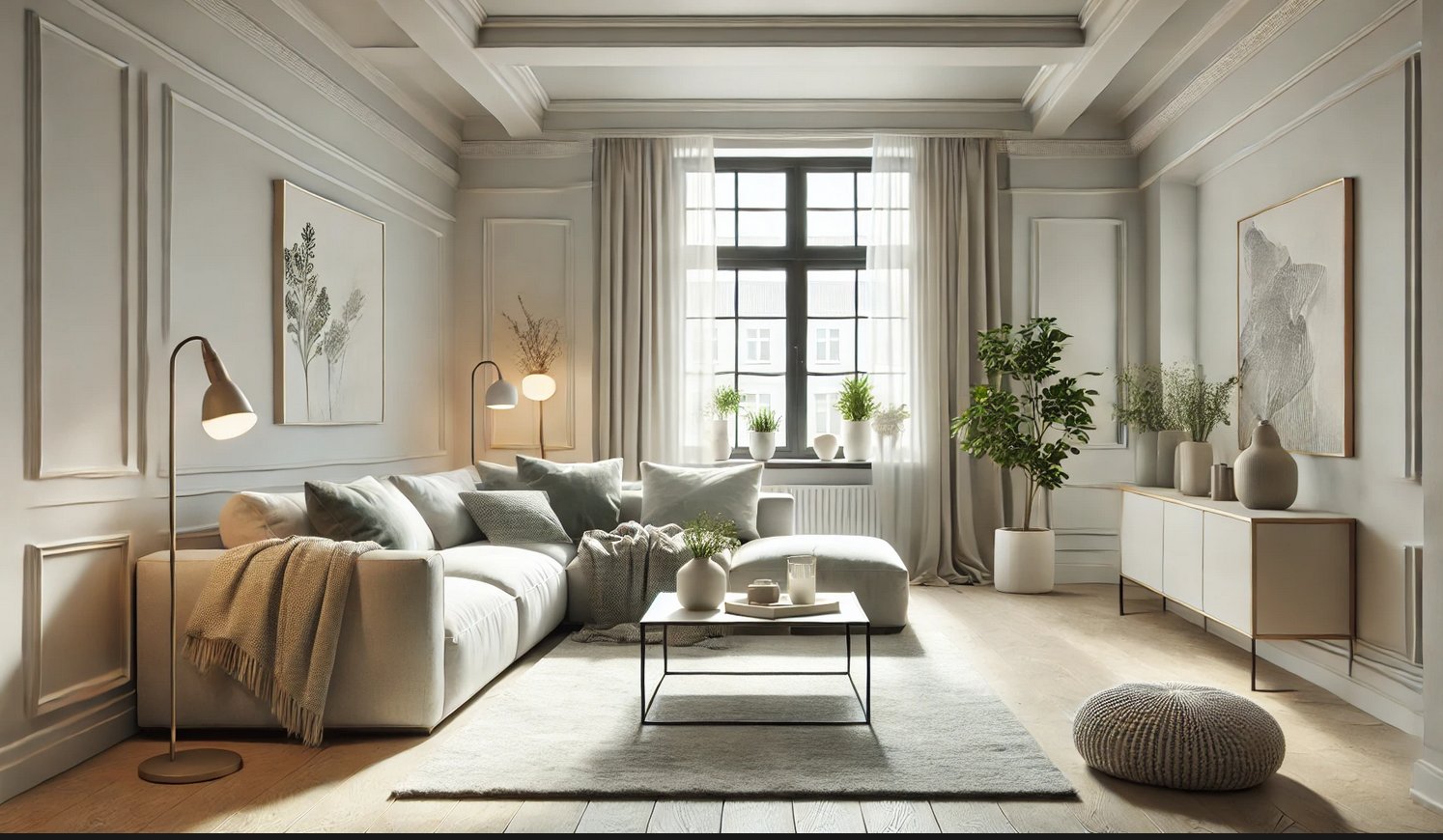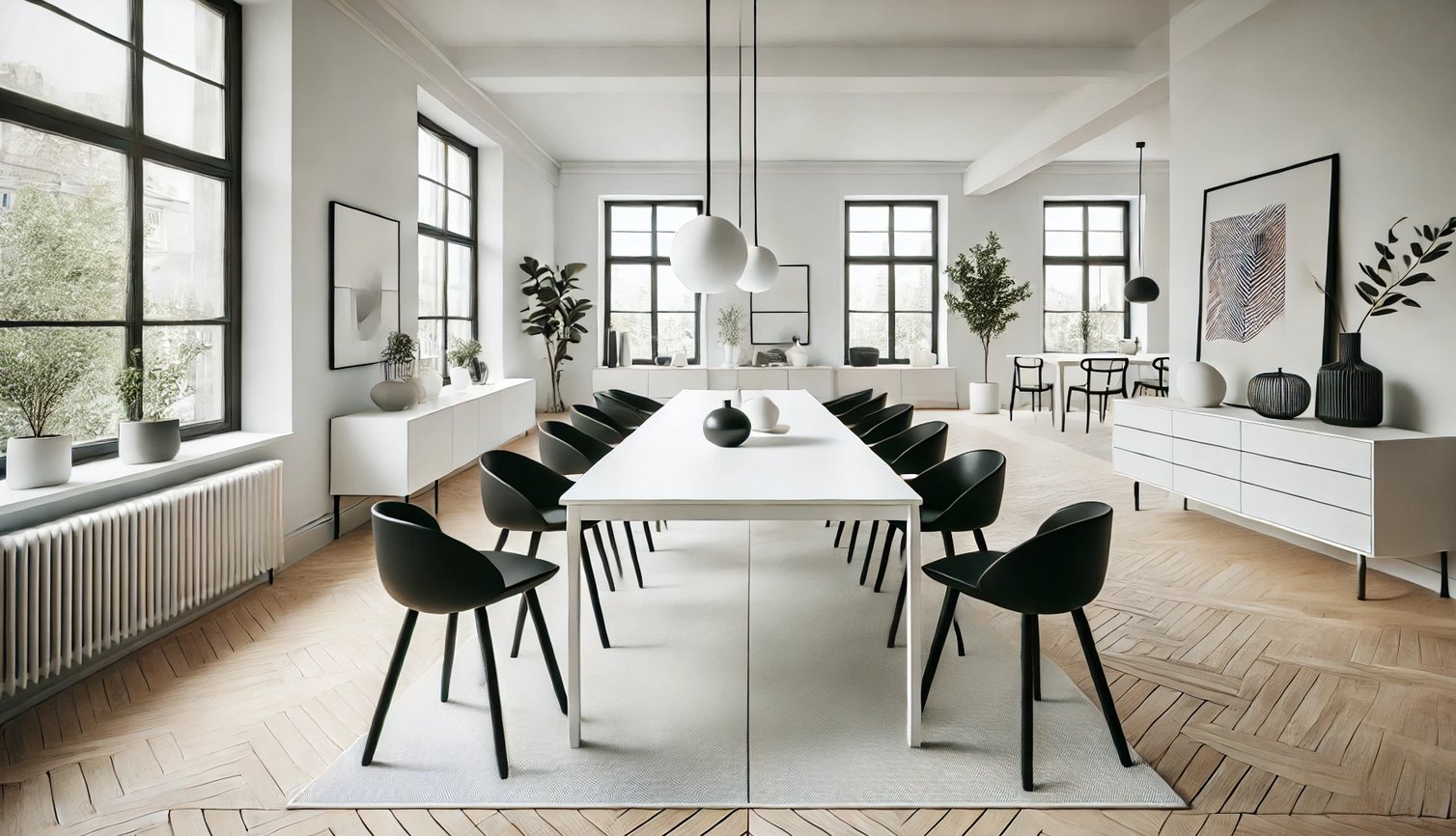Wooden furniture stands as a cornerstone in modern interior design despite numerous material innovations entering the market. The inherent warmth and distinctive character of wooden tables, cabinets, and seating pieces create an atmosphere that manufactured alternatives cannot match. From clean Scandinavian designs to textured farmhouse styles, wooden furniture adapts effortlessly across design philosophies while maintaining its fundamental appeal. Wood’s remarkable versatility – available in numerous species, finishes, and forms – enables designers to incorporate wooden elements that enhance virtually any space. This natural material bridges contemporary interiors with the outdoors, introducing organic textures and grain patterns into living environments. As environmental consciousness grows in importance, wooden furniture embodies both sustainable principles and superior craftsmanship that remains beautiful through generations of use.
The Resurgence of Wood in Contemporary Spaces
The integration of wooden furniture into modern interior design marks a significant shift from the sterile, industrial aesthetics that dominated previous decades. Designers and homeowners increasingly embrace wooden tables, shelving units, and accent pieces to introduce warmth and natural elements into otherwise stark contemporary spaces. This renewed appreciation stems partly from a broader cultural movement toward authenticity in living environments.
Wooden furniture carries inherent uniqueness – each grain pattern tells its own story, each knot and natural marking represents character impossible to replicate in mass-produced synthetic alternatives.
The appeal extends beyond mere appearance. Solid wooden furniture provides exceptional durability compared to particleboard or plastic counterparts, often lasting generations rather than years. This longevity aligns perfectly with growing consumer awareness about waste reduction and sustainable consumption patterns. A handcrafted wooden dining table might serve a family for decades, developing a rich patina that enhances rather than diminishes its beauty over time.
The versatility of furniture of wood particularly shines in contemporary design contexts. Far from being limited to traditional or rustic styles, modern wooden pieces incorporate clean lines, innovative joinery techniques, and unexpected combinations with materials like glass, metal, and stone.
Designers frequently juxtapose the organic qualities of wood against sleek architectural elements – a solid oak table beneath minimalist pendant lighting or walnut shelving against concrete walls creates compelling visual tension. This contrast between natural and manufactured elements forms the foundation of many successful modern interiors. The warmth of wooden furniture softens the potentially cold impression of modern design principles, creating spaces that feel simultaneously sophisticated and welcoming. As interior trends continue evolving, wooden furniture remains remarkably adaptable, fitting seamlessly into virtually any design vision.
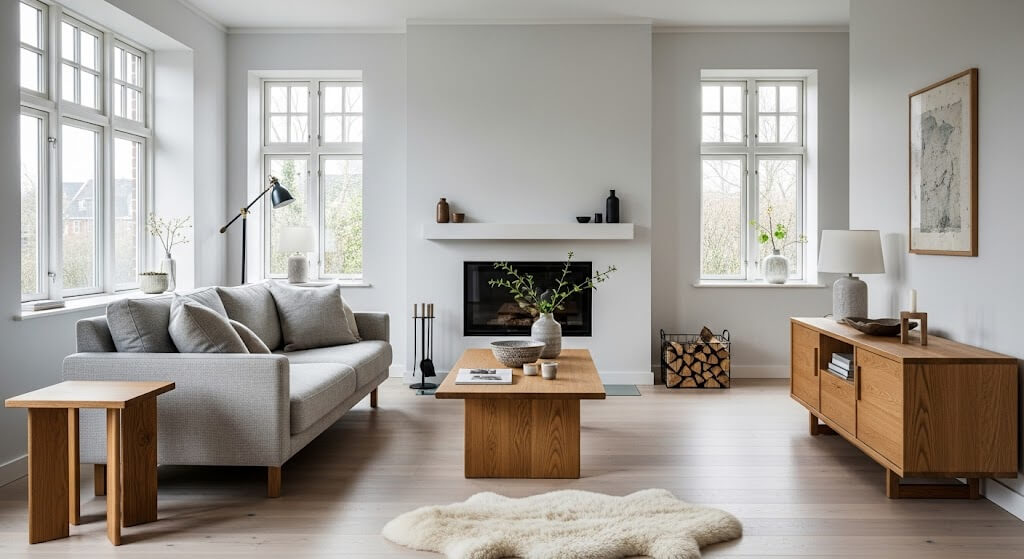
Material Combinations and Design Harmony
Wood rarely stands alone in contemporary interior design schemes. The most compelling modern spaces often feature wooden furniture strategically paired with complementary materials. Glass tops on wooden table bases create visual lightness while showcasing the structural beauty of the wooden elements below. Metal accents – brass hardware on wooden cabinets or steel legs supporting wooden tabletops – introduce industrial notes that prevent wooden pieces from appearing overly traditional.
These material combinations allow wooden furniture to participate fully in modern design conversations.
A solid walnut dining table surrounded by molded plastic chairs exemplifies this dialogue between natural and manufactured materials. Similarly, wooden bed frames paired with crisp, contemporary linens create bedrooms that feel both grounded and fresh. The key lies in thoughtful balance – allowing the wooden furniture to contribute warmth without overwhelming the clean lines characteristic of modern interior design. Especially large pieces of furniture like wooden plank tables or similar massive pieces of fine design.
Color relationships play an equally important role when integrating wooden furniture into contemporary spaces. Light woods like ash, maple, and birch naturally complement the bright, airy qualities often sought in modern interiors. Their subtle grain patterns and neutral tones create harmony with white walls and abundant natural light. Darker woods – walnut, mahogany, and ebonized oak – provide dramatic contrast and visual weight, anchoring minimalist spaces that might otherwise feel insubstantial.
The finish applied to wooden furniture significantly impacts its compatibility with modern design sensibilities. Matte finishes that allow the tactile quality of wood to remain perceptible have largely replaced the high-gloss treatments popular in previous decades. This shift reflects broader design trends favoring authenticity and material honesty.
Beyond the wooden furniture itself, designers frequently incorporate wooden architectural elements to create cohesive modern interiors. Wooden flooring, exposed ceiling beams, and wall paneling establish a visual foundation that connects with free-standing wooden furniture pieces.
Craftsmanship and Production Methods
The resurgence of wooden furniture in modern interior design coincides with renewed appreciation for craftsmanship. While mass-produced wooden furniture remains widely available, consumers increasingly seek pieces that showcase skilled woodworking techniques. Dovetail joints, mortise and tenon connections, and hand-carved details signal quality and care in construction. These traditional methods, when applied to contemporary designs, create wooden furniture that bridges historical craftsmanship with modern sensibilities.
Small-batch production studios and independent furniture makers have flourished in response to this demand.
These craftspeople often combine traditional woodworking knowledge with innovative approaches to design, creating wooden furniture that feels distinctly current while honoring time-tested construction principles. The resulting pieces frequently become focal points in modern interiors – a handcrafted wooden table or bench can anchor an otherwise minimalist space with its rich material presence and evident human touch.
Digital fabrication technologies have simultaneously transformed wooden furniture production. Computer numerical control (CNC) routing allows for precision cutting and complex geometries previously difficult to achieve by hand. These technologies enable designers to create wooden furniture with distinctive contemporary forms while maintaining the inherent appeal of natural wood.
The combination of digital precision and natural material variation yields particularly interesting results – perfectly executed joinery that highlights rather than hides the organic character of the wood. Modern wooden furniture often incorporates sustainable practices throughout the production process. Responsibly harvested timber, non-toxic finishes, and production methods that minimize waste reflect growing environmental consciousness among both manufacturers and consumers.
The most compelling wooden furniture in contemporary interior design often results from production approaches that balance efficiency with craftsmanship. Limited production runs allow for quality control and attention to detail while keeping prices more accessible than fully custom work. This middle ground has proven particularly successful for wooden dining tables, bed frames, and storage pieces that combine clean modern lines with thoughtful material selection and construction techniques.
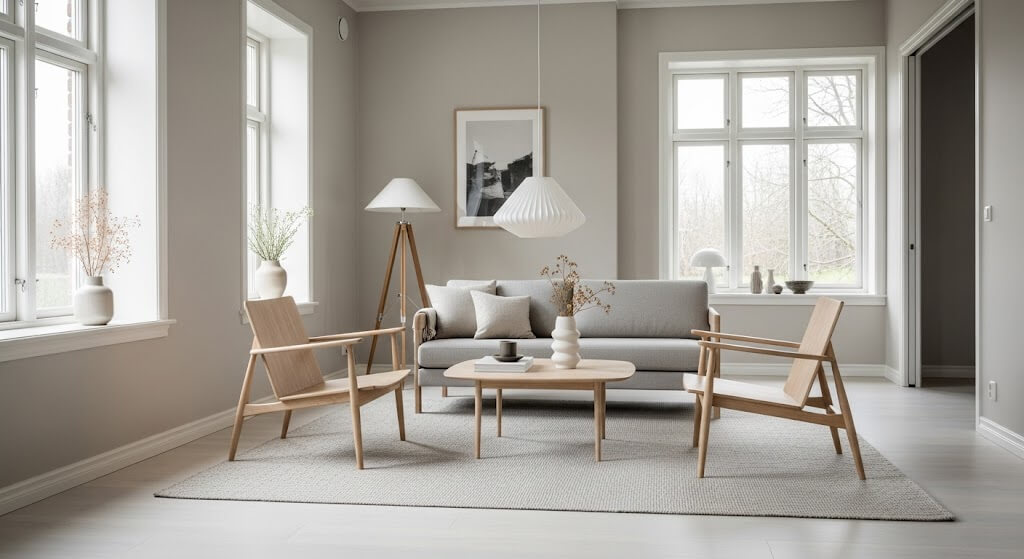
Functional Adaptations for Modern Living
Wooden furniture has evolved significantly to meet the changing demands of contemporary lifestyles. Modern homes often serve multiple functions – living spaces transform into work areas, dining tables become temporary desks, and compact urban dwellings require furniture that maximizes limited square footage. Wooden furniture designers have responded with innovative solutions that preserve the material’s inherent appeal while addressing these practical concerns.
Modular wooden storage systems exemplify this functional adaptation.
These customizable units feature wooden components that can be reconfigured as needs change, combining the warmth of natural materials with the flexibility modern living demands. Similarly, extendable wooden dining tables accommodate varying numbers of guests without permanently consuming valuable floor space. The engineering behind these expanding mechanisms has become increasingly sophisticated, allowing for seamless transitions between different configurations while maintaining structural integrity.
The integration of technology with wooden furniture represents another significant development. Wooden desks and tables now commonly incorporate discreet cable management systems, hidden charging stations, and integrated power solutions. These thoughtful additions acknowledge our device-dependent reality while preserving the clean appeal of wooden furniture.
Multifunctional wooden furniture pieces have gained particular prominence in smaller living spaces. Coffee tables with hidden storage compartments, wooden benches that conceal shoe racks, and platform beds with integrated drawers all maximize functionality without sacrificing style. The natural variation and character of wood ensures these practical pieces contribute beauty alongside utility. Unlike purely utilitarian solutions in synthetic materials, wooden furniture with enhanced functionality continues to develop character with age and use.
Smart storage solutions in wooden furniture help maintain the clean lines associated with modern interior design. Wall-mounted wooden shelving systems that appear to float create visual lightness while providing practical display and storage space. Wooden cabinets with push-latch mechanisms eliminate the need for visible hardware, resulting in sleek, uninterrupted surfaces that align with contemporary minimalist approaches.
Wooden furniture continues to prove its remarkable adaptability in modern interior design contexts. The material’s natural warmth and character create essential counterpoints to the sleek surfaces and technological elements that define contemporary spaces. As designers and homeowners seek balance between innovation and connection to natural elements, wooden furniture provides this crucial bridge. The versatility of wood allows it to participate in diverse design languages – from minimalist Scandinavian approaches to more eclectic modern styles – while always contributing authentic material presence.
The ongoing evolution of production methods ensures wooden furniture remains relevant despite changing lifestyle needs. Advanced manufacturing techniques now coexist with traditional craftsmanship, resulting in wooden pieces that honor historical woodworking knowledge while embracing contemporary forms and functions.
Perhaps most significantly, wooden furniture connects modern spaces with something fundamentally human – our innate response to natural materials and evidence of skilled craftsmanship. In increasingly digital environments, the tactile qualities and visual warmth of wooden furniture satisfy deeper needs for connection and authenticity. The continued prominence of wooden tables, chairs, storage pieces, and beds in contemporary interior design speaks to wood’s unique capacity to enhance our living environments through its natural beauty, adaptability, and lasting appeal.
Andrea Bianchi is a passionate interior designer and renowned blogger who seamlessly blends creativity with functionality to create beautiful, harmonious spaces. With a background in design and a love for aesthetics, Andrea has built a reputation for her unique ability to transform ordinary interiors into extraordinary living environments. Her blog serves as a platform where she shares her insights, tips, and inspirations, offering readers a glimpse into the latest trends in interior design. Whether she’s working on a high-end residential project or crafting content for her blog, Andrea’s work reflects her commitment to elegance, comfort, and timeless design.

